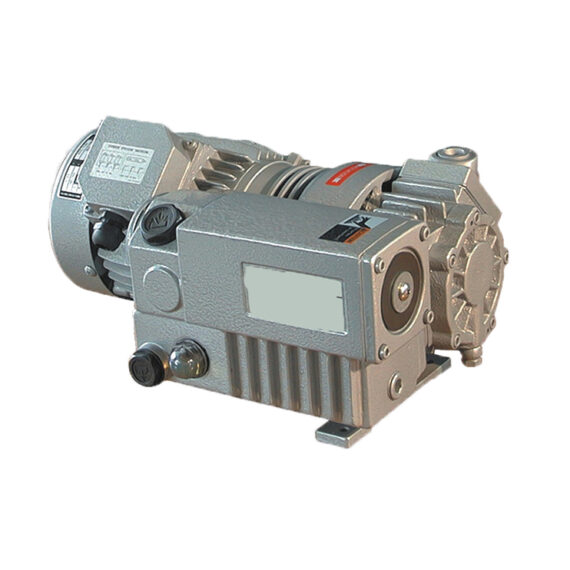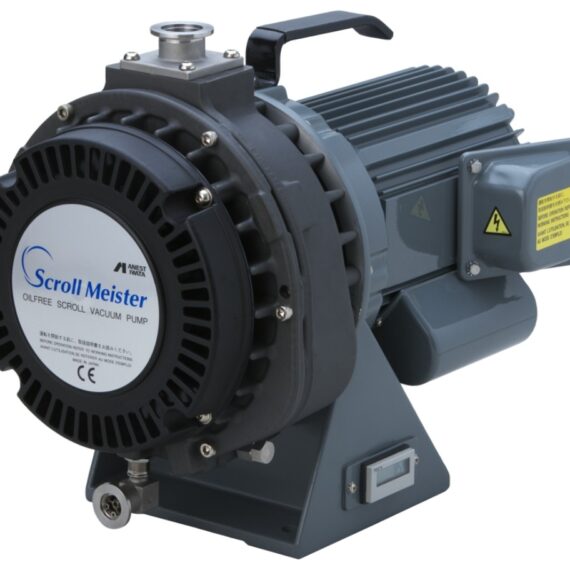
Cyclotron and Synchrotron Evacuation
The removal of air from the chamber of a cyclotron to prevent interference and molecular collision during operation.
View our Products
NRV Series
Rotary vane units are of the less expensive vacuum units in the modern market, with the capability to reach deeper vacuum than liquid ring at the expense of continuous maintenance and less capacity. The NRV Series single stage oil-circulated rotary vane vacuum pumps provide deeper vacuum for perforating or secure holding in a paper cutting machine.
Anest Iwata ISP Series
A dry scroll vacuum pump is incredibly appropriate as a roughing vacuum pump for these evacuation systems. To start, the dry nature of this vacuum pump allows for clean processing: there are no contaminants, liquids, or dirty gasses entering the pump, and only clean process material will exit the pump. This makes evacuation incredibly efficient, as in the case of any backflow, the pump would not introduce its own lubrication or wear into the process. This ensures that the evacuated chamber remains free of contaminants and ready for particle acceleration. Secondly, the dry scroll pump is quiet and less vibration-heavy. This suits the smaller spaces in which these particle accelerators are being operated, bringing safety and comfort to the operators and relevant personnel. These dry scroll pumps are capable of reaching quite deep vacuum levels, giving the fining vacuum pump an easier load to deal with as it starts up. Since fining pumps tend to be incredibly complex and difficult to repair or perform maintenance services on, reducing the load on these pumps as much as possible is key to a long-lasting evacuation system, and the dry scroll vacuum pump fits the bill perfectly. NES Company is a proud partner of Anest Iwata to bring dry scroll vacuum pump solutions to vacuum pump problems.
Cyclotrons and synchrotrons are both examples of particle accelerators which require vacuum to function properly. These setups typically require multiple stages of vacuum pumps steadily increasing the vacuum level to those near outer space. With a roughing pump, fining pump, and UHV (ultra-high vacuum) pump, the chamber can reach such deep vacuum that a particle can remain in an accelerating state without collision for the entire duration of the acceleration procedure, and it can be used for the intended purposes without wasting enormous amounts of energy and cost. Using vacuum, these particle accelerators can function exactly as intended.
Cyclotrons (AKA Compact Circular Accelerators) use two semicircular D-shape electrodes, colloquially called “dees”, in a vacuum chamber. An oscillating radio frequency electric field is applied between the dees, and a constant magnetic field is applied perpendicularly to the dees.
When a charged particle is injected at the center via ion source (ion gun), the magnetic field bends the ion’s trajectory into a circular path. Every time the particle crosses the gap between the dees, the RF electric field imparts a voltage that accelerates the ion because of its electrostatic force. The particle slowly increases the radius of its path, following a spiral trajectory at incredible speeds until it reaches the outer edge of the chamber. At this point, a deflector or kicker magnet, which is a dipole magnet with precise field shaping, pulls it out of the spiral path directly into a target. Cyclotrons are most often used for the research and production of medical isotopes for radio-pharmacy and compact ion therapy because cyclotrons are efficient for accelerating larger particles like protons, deuterons, and alpha particles, all of which are typically used in radioisotope production.
Synchrotrons consist of a large circular ring with evenly spaced RF cavities and magnetic bending elements. Particles are injected into the ring chamber at a slant, and their trajectory is formed via the magnetic bending elements into a circular path. By passing by the RF cavities, their speed increases and they gain mass relativistically, meaning that the energy imparted upon the ion results in an increase in momentum. Because its mass increases its centrifugal force increases, so the magnetic field strength is increased to maintain the circular trajectory. The electric and magnetic fields are perfectly timed (“synchronized”) to the state of the particle being accelerated. Once the particle is sufficiently accelerated it is guided by similar kicker magnets to colliders (chambers which collide multiple accelerated particles), detectors (sensors that can record the passage or interaction of accelerated particles), or experimental stations (chambers which contain synchrotron radiation beamlines that are easier to analyze). Synchrotrons are best for high-energy physics research, light property research, and particle collision research.
Both particle accelerators require a chamber in which the particle is free to accelerate. If there are too many particles already within the chamber, the ion will only collide with those particles, unable to accelerate to any meaningful degree. Thus, multiple stages of vacuum are applied. Vacuum systems have proven to be indispensable to modern particle accelerator research and applications, enabling the precise control required for isotope production, collision physics, and synchrotron radiation.


